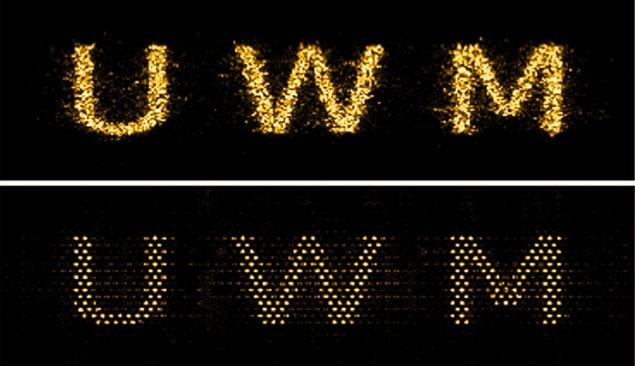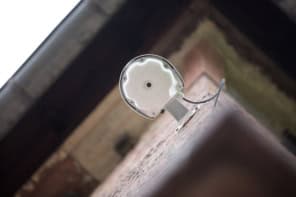
Researchers in the US have created an optical fibre that is very good at transmitting images even though it is highly disordered. The fibre was developed by Arash Mafi and colleagues at the University of Wisconsin-Milwaukee, Corning Incorporated and Clemson University, who say it is the first ever, practical application of an effect from condensed-matter physics called “Anderson localization”. The fibre could be used in endoscopy and other imaging systems.
First identified by the US physicist Philip Anderson in 1958, Anderson localization refers to the fact that the interference of waves scattering from random impurities in a crystal can bring the propagation of a wave to an abrupt halt – an effect called “localization”. Anderson, who went on to share the 1977 Nobel Prize for Physics for his work on this topic, originally formulated his theory to understand the metal–insulator transition. Although measuring the Anderson localization of electrons in solids has proven to be difficult, physicists have had more luck seeing the effect with light and sound waves.
Surprisingly simple
Mafi and colleagues’ fibres consist of 40,000 strands of poly (methyl methacrylate) (PMMA) mixed randomly with 40,000 strands of polystyrene and then drawn into a fibre with a square cross-section that is 250 μm wide. As light passes down the fibre, it cannot scatter into the plane normal (or “transverse”) to the direction of travel because of the random distribution of PMMA and polystyrene. But as the disorder does not extend along the length of the fibre, the light is free to propagate in that direction. This effect, dubbed “transverse Anderson localization”, was first identified in 2008 by Moti Segev and colleagues at Technion in Israel.
The team showed that its technique works by sending tiny images – some just 30 μm across – along a 5 cm section of fibre. The images were created by placing a small stencil of various digits (such as the number “6”) across the face of the fibre and illuminating it with a blue laser. After emerging from the opposite end of the fibre, the image was magnified by a lens and then captured with a CCD detector. By measuring the blurriness of the image, the team says that light entering the fibre deviates by barely 10 μm from its initial trajectory as it passes along the fibre – a distance called the “localization length”.
Patent protected
The team then repeated the experiment using commercial fibres that are designed to carry images. The performance of all the fibres was calculated using the mean structural similarity index (MSSIM), which is a measure of how true the resulting image is to the original object. The MSSIM values revealed that the team’s fibre was slightly better than the commercial products – the team’s fibre scored 0.5877 while the best commercial MSSIM was 0.5591. Mafi told physicsworld.com that the team’s fibre has “clear potential to be significantly better, after improving the fibre specs”.
As for practical applications of the research, Mafi says that the team has taken out a joint patent with Corning on the technology, although there are “no immediate plans” to commercialize the work, despite having discussed the commercial potential of the fibre. “I personally consider the imaging applications such as endoscopy as the main potential,” he says. “Data multiplexing is more far-fetched but conceivable.”
Segev agrees that imaging is an important application. “The advantage of using disordered fibres for imaging is that, in principle, they are able to reach higher resolution than conventional fibre bundles because the Anderson-localized modes can be narrower,” he says.
The system is described in Nature Communications and a preprint is available on arXiv.



